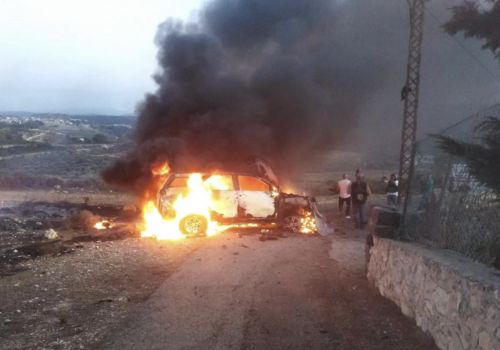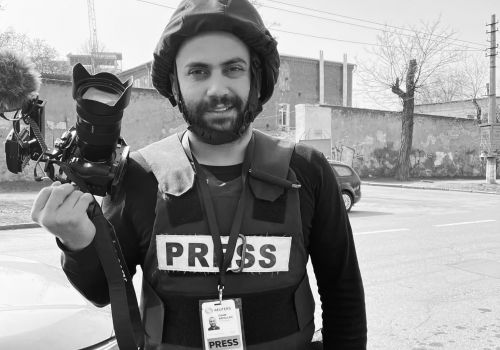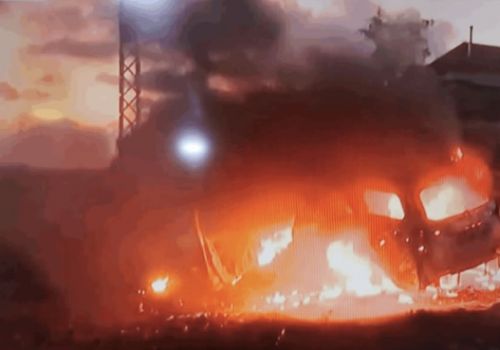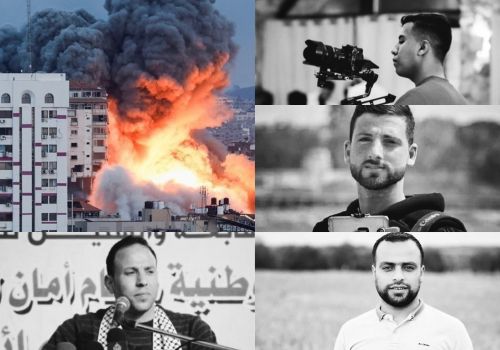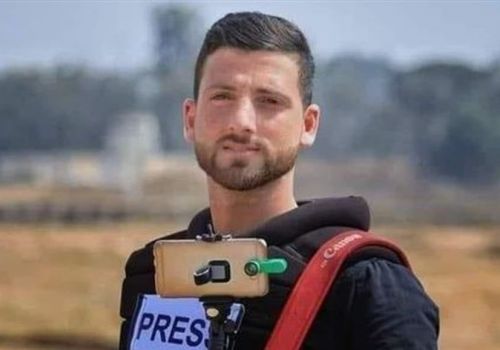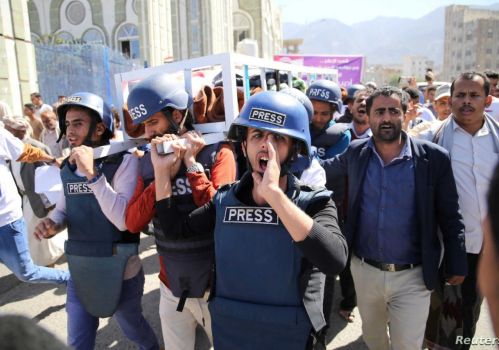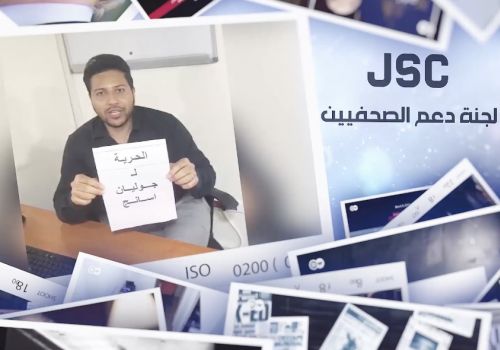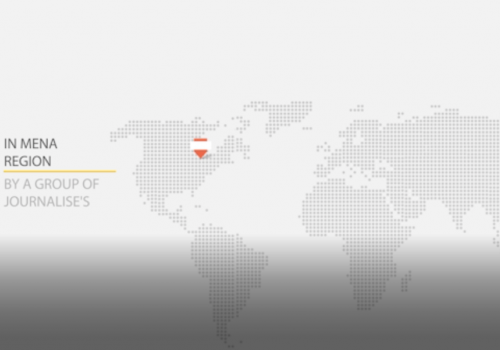Avoiding mistakes in the newsroom: Verifying video from external sources
2022-02-22 02:02
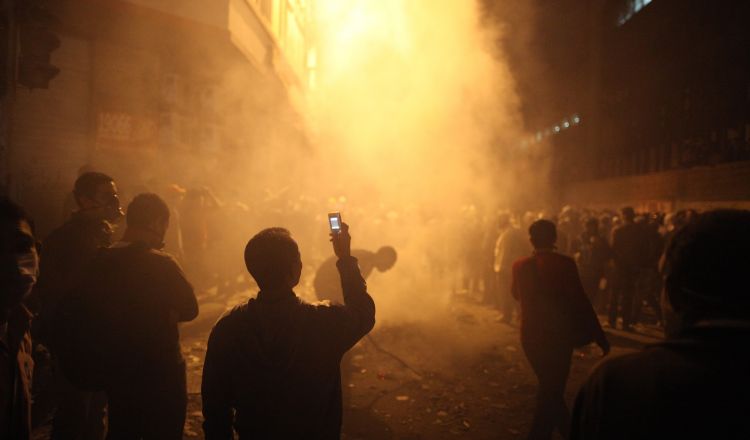
(A youth films the aftermath of a tear gas volley fired by police on protestors in Muhammed Mahmoud Street near Tahrir Square on November 23, 2011 in Cairo, Egypt. [Peter Macdiarmid/Getty Images])
Avoiding mistakes in the newsroom - verifying video from external sources
Montaser Marai-Al Jazeera Media Institute
When video of Osama Bin Laden surfaced around the time of the September 11 attacks on New York in 2001, many people questioned its credibility. We examine how Al Jazeera verifies the authenticity of outside materials, much of it produced by 'citizen journalists'
Following the September 11, 2001 attacks on the US, many questions were raised about Al Jazeera: How does the network access videos of al-Qaeda leader Osama Bin Laden? How does it verify the authenticity of these materials, their timing or their recording location?
At that time, digital technology was not dominating the world as it is today, and thus, it was not easy to determine the location or timing because al-Qaeda purposely camouflaged and hid any indications of its whereabouts.
There is no doubt that Al Jazeera thoroughly checked the videotapes and followed its strict editorial policy before broadcasting them. However, the controversy that would be raised following the broadcast of these tapes did not concern Al Jazeera, who believed in the viewers' right to knowledge. Al Jazeera’s main concern was the possibility of committing a mistake or broadcasting inaccurate material. Although the verification process depended primarily on human effort at that time, Al Jazeera followed a series of steps to validate the video tapes.
Assessing a source and its credibility
How we determine the credibility of an outsourced material, we must take multiple factors into consideration. Those factors include assessing the source and its credibility for Al Jazeera, watching the material carefully, analysing the form and content thoroughly, and verifying that it was free of any room for doubt are aspects. In many instances, seeking the assistance of experts and technicians to verify that the material was not fabricated or manipulated, and searching for another source to corroborate the validity of a video and sound recording are also often required.
The network paused for a moment before broadcasting the tape to discuss the content with the editorial board. The tape broadcasting was delayed many times to ensure that it complied with the editorial policy and professional ethics and to avoid falling into the trap of beating the competition and securing a scoop at the expense of accuracy.
Broadcasting the tape with some room for doubt, and informing the viewers of this to ensure transparency, Al Jazeera would often state that the tape was “attributed” to al-Qaeda without being final in its ruling on credibility, or the network would include the disclaimer that “the authenticity could not be verified”. By this, Al Jazeera remained ethically responsible and realised that the editorial board’s decision must be carefully deliberated.
Al Jazeera detailed the context in which it received the tape and opened a discussion on this with the viewers, with the assistance of experts and analysts.
The network presented all points of view, and the American perspective in particular, which published official statements confirming or denying the validity of the videotapes and voice recordings.

Major transformations
In 1996, Al Jazeera capitalised on the huge worldwide transition from state-controlled terrestrial television to channels that could be received via satellite without censorship.
In 2006, Al Jazeera again quickly transitioned to digital media. It realised early on that the news industry was changing, and news coverage and audience interaction would witness a transformation, where the audience would no longer remain bystanders. During the same year, Al Jazeera established the new media unit to prepare for the future and help the channel in its transition phase to adapt to the rapid change. For the first time, there were technicians and journalists working together in a different dynamic, where technology intersects with media.
The highlight of this was greater interaction with the Arab audiences who follow Al Jazeera through digital platforms as well as on television. Citizen journalism started to expand, and Al Jazeera responded quickly to this idea for the following reasons:
- Al Jazeera from the outset decided to side with marginalised people, and refrain from focusing on the news of leaders and famous people.
- Al Jazeera believed that technological advances allow people to participate in broadcasting news and images and that a normal citizen can hold the role of a journalist, especially in areas where Al Jazeera correspondents are not present, while verifying and authenticating the material the audience sends.Alternative media and citizen journalism would liberate the media from official control that promotes the agendas of tyrannical regimes and commercial media which prioritises profit at the expense of credibility and public interest.
Through the new media unit, Al Jazeera gave out dozens of cameras to activists in several areas of the Arab World to enable them to capture a glimpse of their reality. And in return, Al Jazeera used these images in its news coverage. However, the time was not yet ripe for testing the success of this experiment.
A new era for journalism
The idea of the new media and citizen journalists attracted young people to Al Jazeera. In 2008, a plan was put in motion to produce a documentary on bloggers in Egypt. The blogs acted as alternative platforms for traditional media and conveyed the voice of youth criticising the political and social reality in Egypt. The film followed the story of four different bloggers whose blogs were widely read, a group of activists or new journalists carrying small cameras and running stories from inside the growing movement in Egypt against the regime of long-time Egyptian President Hosni Mubarak, and his attempt to pass on his position to his son Jamal Mubarak.
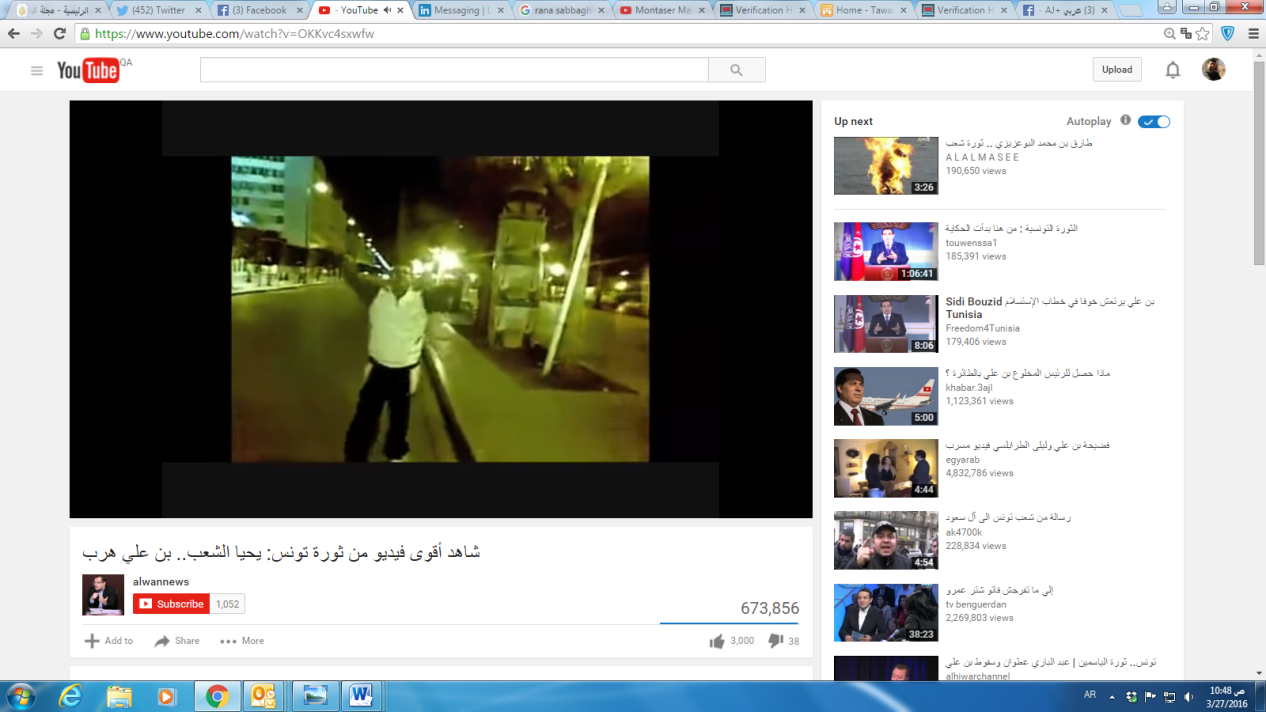
Al Jazeera strongly believed in the role of citizen journalism, and with time it acquired new sources of news, but these were not free of new challenges.
Al Jazeera’s policy of verifying the validity of the material it received from the activists was based on its confidence in its sources and a vast network of citizen journalists that was recruited by Al Jazeera and sporadically provided them with journalistic training. The challenge of fabricated images was not yet serious, and discovering mistakes in a video or shot received from activists was not easily achieved by Al Jazeera or its viewers.
Nevertheless, as time went by, social media proliferated and became more important. Improved internet services and the proliferation of smartphones allowed a steady flow of videos and images. The Tunisian revolution sparked in late December 2010 and Al Jazeera played a significant role in covering the street demonstrations, challenging ousted President Zine El Abidine bin Ali. Al Jazeera’s office in Tunisia was shut down following official orders at the time. However, thanks to videos sent or uploaded on social media by citizen journalists and activists, Al Jazeera succeeded in breaking the blackout imposed by the Tunisian regime and the world was able to follow the events up until the flight of President Bin Ali on January 14, 2011.
On January 25, 2011, the revolution started in Egypt. Thousands of young people responded to a Facebook call to take part in the demonstrations held on “Police Day” to expose police violations. The video clips received via social media enhanced the coverage of Al Jazeera’s team on the ground, and in many instances the activists and amateurs who filmed the videos outdid the professional journalists. The strongest shots that moved the people around the world were those taken by amateurs in various Egyptian cities.
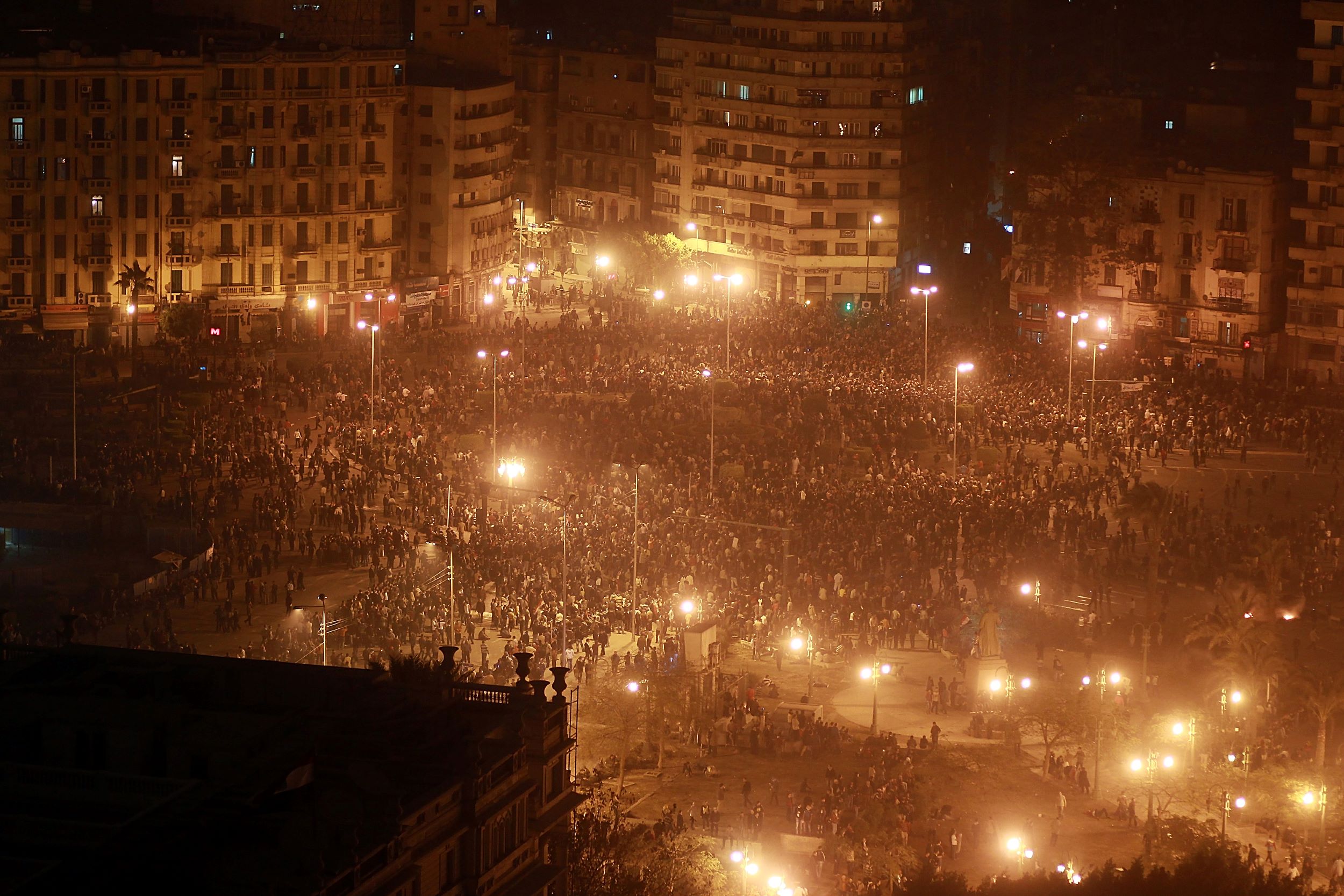
At the time, Al Jazeera provided a large platform for videos and images, and this ensured continued coverage from the streets and challenged the regimes that tried to combat these revolutions and withhold the picture from viewers. Al Jazeera admitted that its coverage and crews on the ground would not have been successful without the efforts of activists and volunteers.
Former Director of Al Jazeera Network, Wadah Khanfar, who played a prominent role in leading coverage of the Arab Spring revolutions, wrote in British newspaper, The Guardian: “The Egyptian regime decided to close down the Al Jazeera offices and to ban its reporters and crews from working, thinking perhaps that by banning Al Jazeera the truth about what the country had been going through could be obscured. That was not the first time an office of ours had been closed down in the region. On that same day, we sent out a message to our viewers in Egypt telling them: ‘If the authorities have banned our reporters from working, then every single one of you is an Al Jazeera reporter.’
"Hundreds of activists responded immediately by supplying us electronically with a stream of news and video clips via social network sites. We dedicated a team of our editors to the task of receiving and documenting these contributions and then relaying newsworthy items to the newsroom. We succeeded in breaking the siege imposed by the Egyptian security apparatuses, thanks to the faith our viewers had in our mission and to our faith in their capabilities. We set up an entire network of volunteers and activists who supplied us electronically with news. In the meantime, our own crews spread out within Cairo, within Alexandria and within other Egyptian cities doing their job secretly. Al Jazeera technicians succeeded in providing live coverage from Tahrir Square by means of small satellite transmitters, which Egyptian security could not locate.”
Al Jazeera sought to validate the images received from activists in Tunisia and Egypt, but it cannot be said, at that time, that it had a clear policy and approach in dealing with these unconventional sources. It was a new experience and the acceleration of events required promptly processing the materials flowing through the internet and social media, which led to mistakes committed in the future.
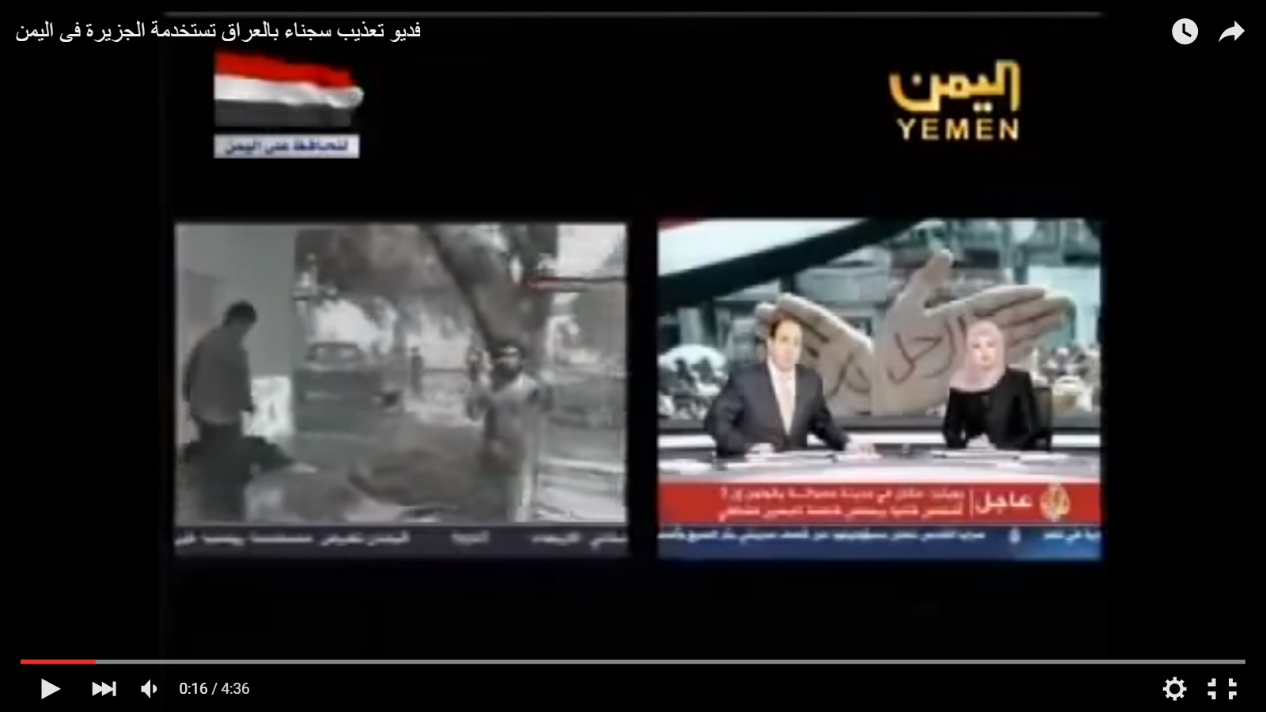
During March 2011, Al Jazeera received a multitude of material about the revolutions ignited in Syria and Yemen. Al Jazeera broadcast the video clips portraying the torture of prisoners at the hands of Yemeni security forces. It later appeared that this was old footage of the torture of Iraqi prisoners during the regime of former President Saddam Hussein. Al Jazeera committed an unintentional mistake but it apologised to the viewers and corrected the story. The Yemeni channel promoting ousted President Ali Abdullah Saleh took advantage of the opportunity to attack Al Jazeera and question its professionalism as a result of this mistake.
It was an important lesson that later led to enhancing validating mechanisms for the video clips and images. In spite of all the exerted efforts, the work approach was not as clear as it should have been, and was heavily dependent on individual efforts, perhaps because it was a new experience.
A prominent challenge arose when dealing with the materials coming in from Syria. I remember when I saw the video clip of the first demonstration in Hamidieh Market in central Damascus on March 15, 2011. I was browsing through YouTube that day for any material coming in from Syria after online calls to demonstrate and demand change. I obtained the video and presented it to the editing team in the newsroom, but everyone seemed to question its validity.
The photographer insisted that the date was March 15 and that the location was Hamidieh Market. The YouTube upload date for the video was the same date of the demonstration, and I was able to verify the whereabouts because I had been to Hamidieh Market on numerous occasions. In spite of this, I sought the assistance of colleagues from Syria to verify the spot and look for any signs that may confirm or deny the video’s validity. We were unable to check with Al Jazeera’s correspondent at the time, but I succeeded in verifying the facts through communicating with activists. Although there were some uncertainties, we felt that the factors for verifying the validity of the video outweighed all others.
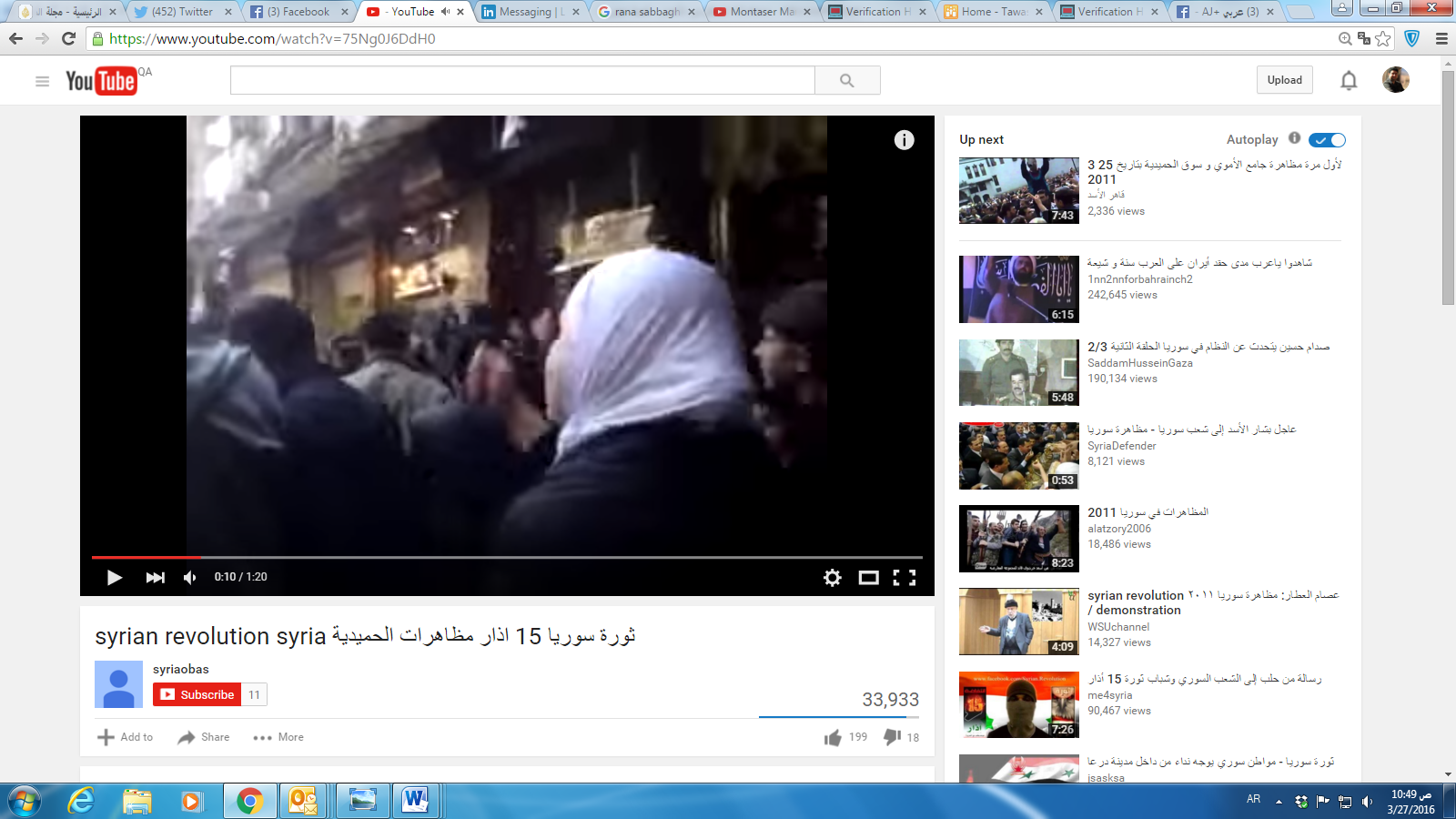
In the past, there have been instances where mistakes were made. For example, we once posted videos from Syria, only to find that they depicted events from another location and date. When possible, we correct the news immediately in subsequent bulletins. Slowly, a new culture evolved in the newsroom, where video clips, images and news were verified by a specialised division.
Establishing a verification unit
Al Jazeera’s interest in digital media dates from many years ago, but in 2014, the channel decided to establish a social media unit inside its newsroom. One of the main duties of this unit was to check the content produced by users known as user-generated content, as it became an important source of news with equal importance to traditional news from the newsroom (correspondents and news agencies).
On February 16, 2015, Egyptian fighter jets launched an airstrike on the city of Dirna, east Libya, which targeted - according to the Egyptian authorities - ISIL sites, in response to ISIL executing 21 Egyptian Copts in the western Libyan city of Sirte. However, images of the Egyptian jets targeting the Dirna site and killing three children soon surfaced on social media, contrary to the official Egyptian version.
Al Jazeera’s social media unit initiated an immediate online search in parallel with the news coming in about the Egyptian raids from the news agencies. The unit tried to track the pictures of the bodies of the three children claimed to have been killed in the raid. After direct contact was established with one of the users who uploaded the image on Facebook, he confirmed that it was 100 percent accurate. However, Al Jazeera had doubts since the admin of the Facebook page lived in France, not Libya.
The unit also found that he was originally a resident of the city of Benghazi and not Dirna, where the raid had taken place. An independent journalist was also contacted in Dirna via Twitter confirming the validity of the image. A review of his account indicated that he provided valid information. Al Jazeera’s correspondent in Tripoli also contacted several sources on the ground in Dirna, and thus, Al Jazeera developed the conviction that the image was valid and it consequently published it on its digital platform and in its bulletin.

Al Jazeera faced a backlash from the Egyptian media which claimed that the image of the three children was fabricated, and that the children died as a result of a gas heater leak in Tripoli. The Egyptian media accused Al Jazeera of falsifying facts and attempting to misguide viewers. At a certain point, Al Jazeera doubted the validity of the image under the wave of criticism, and decided to remove it from its digital platforms and to refrain from using it in its bulletins. It was without a doubt a moment of confusion, and the decision to remove the image was not a sound one, because rescinding its story did not follow professional principles that proved that in fact the image was fabricated.
Here, the traditional media played a decisive role: Al Jazeera’s correspondent in Tripoli succeeded through his sources on the ground in securing an exclusive video that confirmed Al Jazeera’s story and the validity of the image it published on the killing of children by Egyptian jets in Dirna. Later, Al Jazeera insisted on the validity of the story and the image, and it used the new video to corroborate its story that contradicted the Egyptian authorities’ version. It also broadcast a report outlining the path that the news story took and refuting the Egyptian media’s claims.
Amnesty International confirmed that its investigation into the Egyptian raids against targets in the Libyan city of Dirna on February 16, 2015 indicated that at least two rockets fell on a residential area, killing seven civilians: a mother and her three children, and three other individuals.

Mistakes will always happen
Al Jazeera’s next step to improve its performance in dealing with user-generated content (UGC) was to train the social media unit’s team on new verification mechanisms. In addition, one hundred journalists from its newsrooms were given training on understanding the basics of UGC, its value as well as the challenges imposed by this type of content. In spite of all of this, mistakes happened.
In December 2015, a video was uploaded on social media about Canadian children singing “Tala Al Badr Aleina” in Arabic to welcome Syrian refugees. It later became clear that the video had nothing to do with Syrian refugees, and that it was misinformation being spread and shared by many. A number of television channels - including Al Jazeera - had promoted the video. Perhaps, the global climate of sympathy with Syrian refugees around the world helped in the video’s spread, especially in Canada who's then newly elected Prime Minister, Justin Trudeau, welcomed the first wave of refugees arriving in the country.
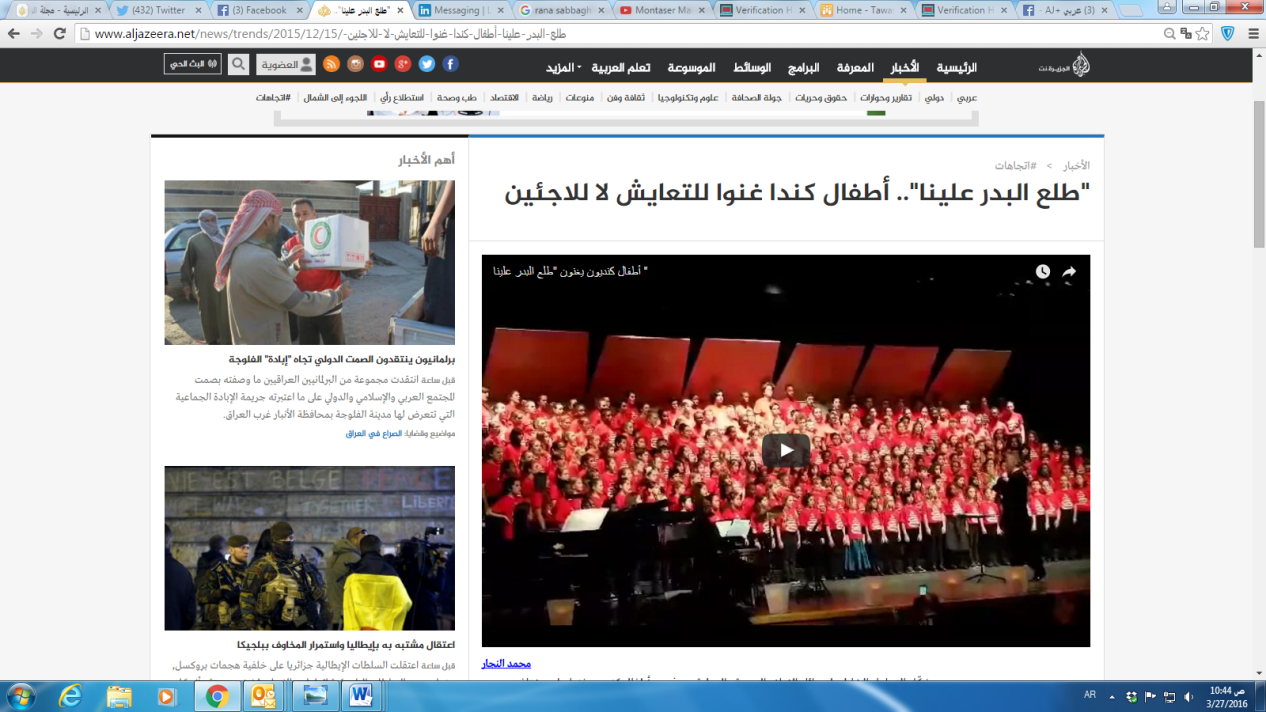
The digital platform, AJ+, made the same mistake as it appears in the video uploaded onto YouTube:
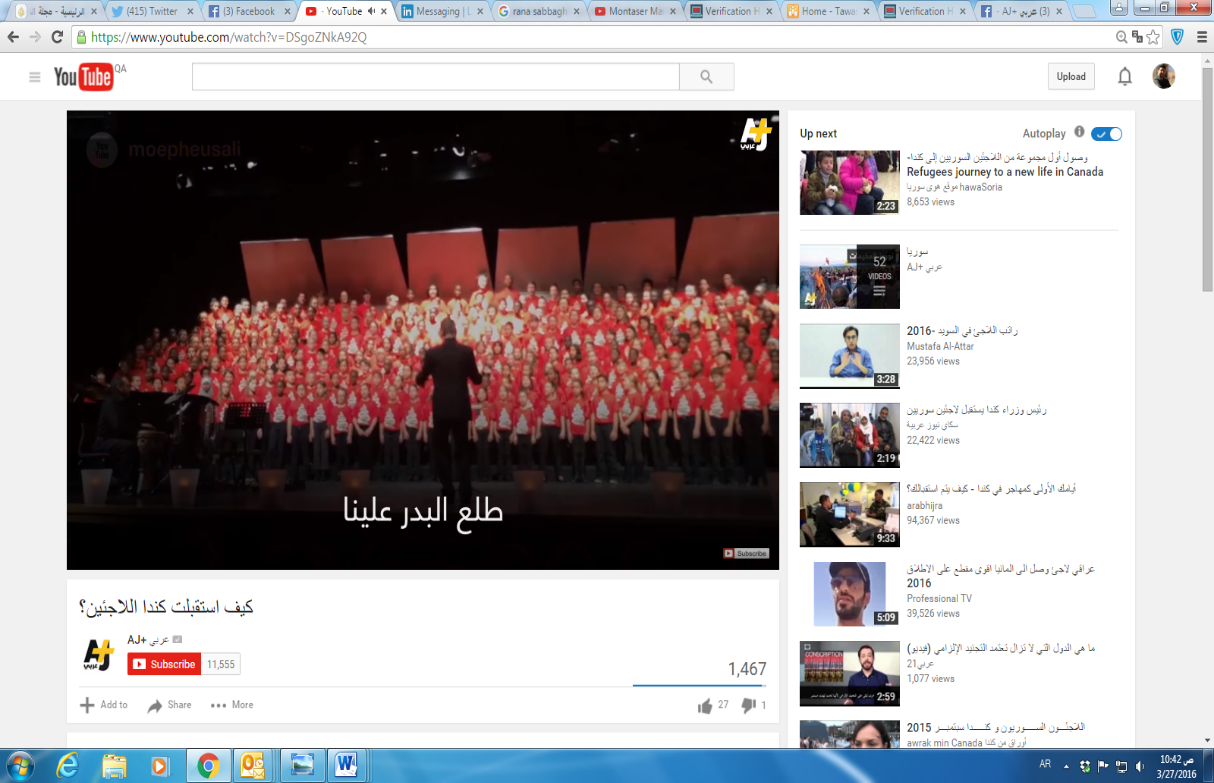
However, AJ+ took the initiative in admitting this mistake and corrected the story in another clip:
Mistakes will always find a way to enter the realm of journalism, especially on digital platforms and with the influx of video clips and images newsrooms receive on a daily basis. However, mistakes do not negate the fact that Al Jazeera’s experience in authenticating and verifying digital platform content has matured as the channel learned from its mistakes and developed policies to become more methodological.
For the purpose of enhancing sound practices, Al Jazeera’s Media Training and Development Centre published a brief manual that can help journalists understand the verification mechanisms and how to deal with user-generated content.
To add more, the role of users or browsers cannot be overlooked in the evolution of this experience, as social media networks have allowed better monitoring of media and interaction as well as highlighting mistakes as they occur.

